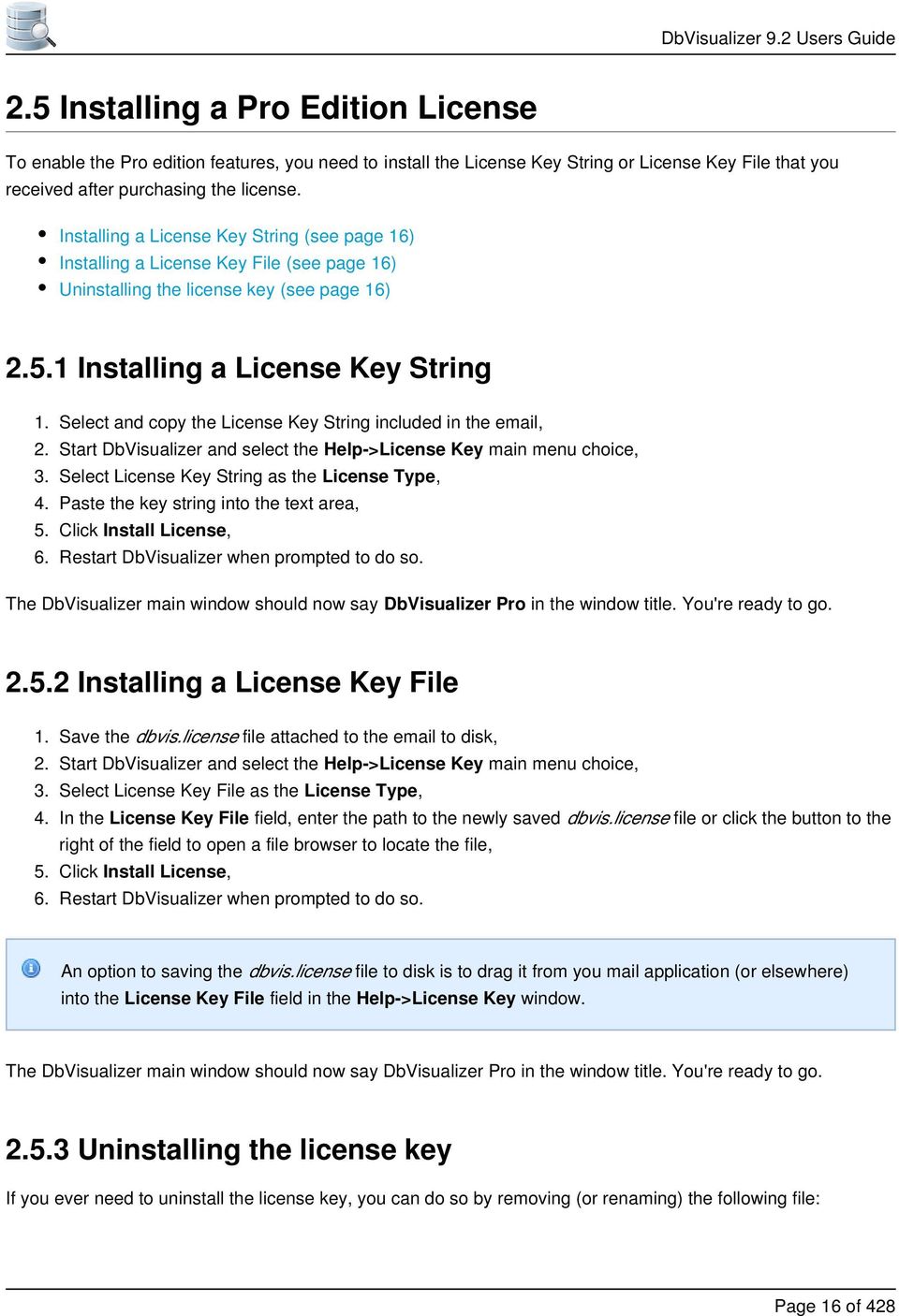

Let IT Central Station and our comparison database help you with your research.

In other words, if a query has four operations like that, PostgreSQL may use four times work_mem of memory. DbVisualizer vs Terracotta BigMemory: Which is better We compared these products and thousands more to help professionals like you find the perfect solution for your business. Please remember, that PostgreSQL uses up to work_mem of memory for each sorting operation or hash table for a query. The right value may sometimes be almost double of those kB. If not, increase the value by one megabyte and check the EXPLAIN ANALYZE output again. If it has, then you've found an appropriate value. It has to be higher than those kB that you see in EXPLAIN ANALYZE output.Īs a rule of thumb, you can round up that value to the nearest megabyte. What is the optimal work_mem value for a query? You can learn more about SET command in PostgreSQL documentation. This example sets work_mem for a single transaction and then automatically resets it to the server default value. SELECT * FROM users ORDER BY LOWER(display_name)
#Dbvisualizer increase memory how to
This example shows how to allow a specific SQL query to use up to 256 MB of physical memory to perform sorting and then resets work_mem value for the current session to the current default value. for individual transactions (to fine tune memory usage for specific queries without affecting the users and connections that perform other queries).at the database server level (it will take effect for all queries),.Use SET command to change work_mem value. Higher work_mem value may make such queries faster if it allows to fit all the temp data for the query into memory. If you see lines like Sort Method: external merge Disk: kB then it is definitely happening. To find out, just run EXPLAIN ANALYZE for that query against the production database server and have a look at its output (the query execution plan). How can I tell if a query is slow because it actually uses temp files? Since disk IO is much slower than memory IO, such heavy queries may become increasingly slow as the number of rows in the dataset grows, even though the query may use indexes efficiently. If sorting or hash table needs more memory than permitted by work_mem, then PostgreSQL will use temp files on disk to perform such operations. PostgreSQL uses the value of work_mem setting as the limit on how much memory each query may use for each sorting operation or hash table. Queries against large sets of table rows may need a lot of memory to sort, join, aggregate, or subselect data. why SQL queries in PostgreSQL may be slow even for indexed tables. Truncate Values truncates the original value for the grid cell to be less then the setting of Max Chars.This post explains how to tune work_mem setting in PostgreSQL to improve performance of slow queries that sort, join or aggregate large sets of table rows.įirst of all, let's look into one of the reasons.You have two choices: Truncate Values or Truncate Values Visually. You can define how to deal with columns that have more characters than the specified maximum in the Tool Properties dialog, in the Grid category under the General tab. If you are only interested in seeing a few characters, you can set the Max Chars field in the SQL Commander toolbar to the number of characters you want to see. 5000) to set a new limit.Ĭharacter data columns may contain very large values that use up lots of memory. Use a value of 0 or -1 to get all rows, or a specific number (e.g.

If you really need to look at more than 1000 rows, you can change the value in the Max Rows field in the SQL Commander toolbar. Using a WHERE clause in the query to only retrieve the rows of interest instead of all rows in the table,.If this limit prevents you from seeing the data of interest, you should first consider: DbVisualizer limits the number of rows shown in the result set tab to 1000 rows, by default.


 0 kommentar(er)
0 kommentar(er)
